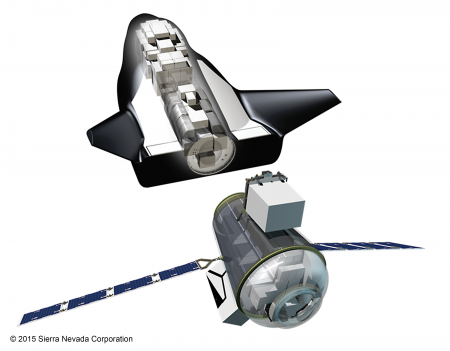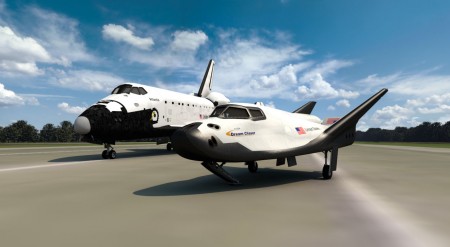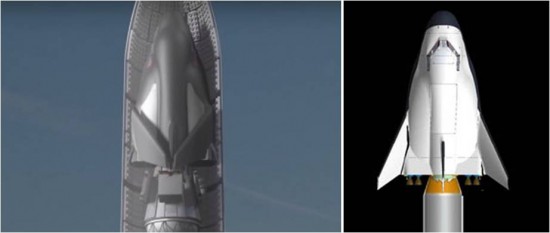January 18, 2016 – In previous commercial resupply contracts, the Dream Chaser, Sierra Nevada’s mini-shuttle had been shut out by NASA. But now the space authority has given the company the green light for delivery missions to the International Space Station from 2019 to 2024.
Sierra Nevada Corporation (SNC) operates out of Louisville, Colorado. The company has developed two versions of its Dream Chaser system, a cargo carrying module and a passenger module.
Unlike Cygnus, Orbital’s resupply capsule which burns up on re-entry, and unlike SpaceX’s Dragon capsule which theoretically is capable of reuse, Dream Chaser is a partially reusable space plane designed to withstand a minimum of 15 missions with 90% component reusability. It is 9 meters (30 feet) in length, and roughly 1/4 the size of NASA’s former Space Shuttles.
On dedicated cargo flights the space plane portion is accompanied by an attached cargo capsule. Upon separation from ISS and prior to de-orbit, the space plane jettisons the cargo module which burns up on re-entry. But the rest of it returns to Earth using a low-gravity (1.5 Gs) re-entry followed by a horizontal runway landing.
For crewed flights Dream Chaser is 100% reusable and like Boeing and SpaceX, SNC has ambitions to see it used to transport human crews to low-Earth orbit destinations. Up until now, however, NASA had made SNC a third commercial option awarding it no resupply or human crewed mission contracts. With this new contract Dream Chaser is finally going to fly. The contract is for a minimum of 6 cargo service missions. The company gets the chance to demonstrate a technology once considered moribund.
Why do I say that? Because Dream Chaser started out as a NASA concept to be deployed as a space taxi after the heavy hauling Space Shuttle was no longer needed. The first design concept appeared in the early 1980s and was was designated the HL-20 with HL designating horizontal landing. But NASA, under budgetary constraints, abandoned the HL-20. Former NASA engineers and scientists, however, chose to keep the Dream Chaser dream alive by creating SNC.
Now more than three decades later the space plane taxi is alive and well and available in two flavours. One is the Dream Chaser Cargo System. The second is the Dream Chaser Space System. The new contract covers the first of these two but don’t be surprised if NASA in the near future chooses the second for crewed flights.
So what are the differences?
The cargo system version (seen below) can deliver more than 2.5 tons of pressurized or unpressurized cargo to ISS. The cargo system uses a folding-wing design to allow it to fit inside rocket fairings atop a number of the commercial launch systems NASA uses. It can also serve as an orbital disposal system with the cargo module left to burn up in the upper atmosphere. But experiment results and equipment from ISS can be returned to Earth using the space plane portion of the system.
The space system is a space taxi (seen below in front of the Space Shuttle Atlantis) capable of delivering 7 crew members plus cargo to ISS. It comes with windows, an environmental life-support system and sits atop a launch system. Currently the rocket of choice is the United Launch Alliance, Atlas 5. The space system is capable of a powered launch abort followed by a runway landing.
Both systems feature autonomous launch and landing capability. Both use non-toxic consumables including propellants. Both can be used to boost the orbit of ISS when docked.
In the two images below you see the different configurations for Dream Chaser in launch mode. On the left is the cargo system with folded wings sitting inside a rocket fairing. While on the right is the space system giving a flight crew a much safer and unobstructed position on top of a launch system.










